The Official Blog for the USC Roski School of Art and Design: Berlin Trip 2017
Don't wanna be here? Send us removal request.
Link
Here is an installation that I would love to see in Berlin. I have been following this artist’s work for a little while now. I am very interested in the way his works physically activate and portray equilibrium within a space.
The gallerist of Konig Gallery, Johann Konig, is also partially blind and started his gallery in Berlin when he was just 20 years old.
-Mark Koenig
0 notes
Photo

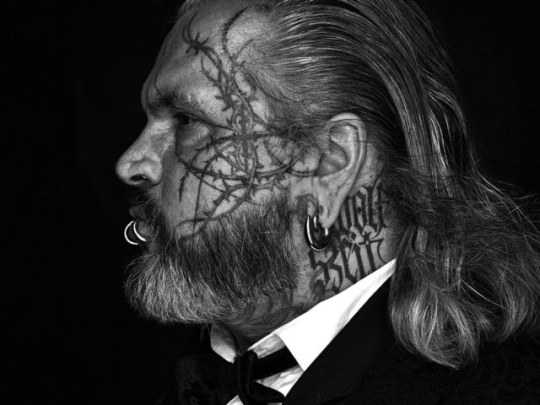
What are the little things that makes Berlin…Berlin?
Berghain
The famous nightclub. it is housed in a former power plant near the railroad. The club opens Friday night and remains open 24/7 until Monday. The bouncer is Sven Marquardt. Berghain is known to deny most people.
The top picture is Berghain and the lower is the picture of the bouncer Sven Marquardt.
_______________________________________________________________________
Austin Murphy
0 notes
Photo


What are the little things that makes Berlin...Berlin?
Ost-Ampelmännchen
The cross walk light characters varied from Eastern German and Western Germany during the GDR. This design was created in the late 60′s for Eastern Berlin to relate to the elderly and children, whom were seen to use the crosswalk the most. It was not until several decades that Western Berlin adopted this cross walk light.
_______________________________________________________________________
Austin Murphy
0 notes
Photo

Brigette and Martin Matschinsky-Denninghoff. Berlin. 1985.
It symbolizes the break between Western and Eastern Berlin.
"The sculpture is accessible from all sides and thus perceivable to viewers. [What is] emphasized is the direction West-East and East-West. Our sculpture is specifically designed as a big, 'organically grown' gate, forming a double arch which is not just necessary and practical, [but an] invigorating emphasis...we are trying to communicate something of Berlin's situation in a symbolic way." Brigitte Matschinsky-Denninghoff.
_______________________________________________________________________
Austin Murphy
0 notes
Photo
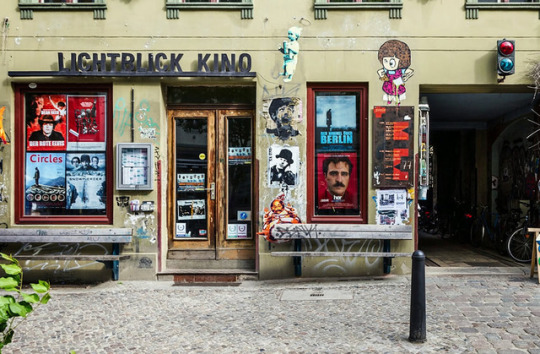
Lichtblick Kino (Bright Spot)
Hey all, here is Berlin’s smallest cinema. It opened in 1995, after relocating from a previous building at Wolliner Strasse 19. Lichtblick Kino was voted the best art house cinema in Berlin by readers of City Magazine in April 1999. It is operated by a collective which focuses on the emerging cinematic non-conformist cinema. The screenings fit only 32 people at once. Projection is 35mm, 16mm and video. The cinema is very eclectic, showing classical pieces, documentaries, and new-wave works. Films by directors such as Fasbinder, Passolini, Brunel, Bergman and Fellini, as well as experimental films are shown.
I am interested in visiting this cinema because I want to experience alternative film cultures and industries. I have only experienced first hand the American film industry. I have heard from friends that European film is much more artful. Perhaps less capitalist-driven? perhaps less mechanic? perhaps more intimate?
Here’s an interesting article that compares the two: https://www.theguardian.com/film/filmblog/2007/jul/04/dumbhollywoodforeverindebt
I’m curious to see if these theories hold true.
xoxo
Alexah
0 notes
Video
youtube
Hello, Mark here posting. Here is a video shot by German artist Matthias Fritsch in 2000 during a parade in the streets of Berlin. Following the rise of youtube, the video went viral and techno viking quickly became an internet phenomenon. A documentary was even created about the video. Needless to say, he is pretty badass and brings to the table some of the craziest dance moves the world has ever seen. To this day he remains anonymous.
I am very fascinated by internet memes; specifically how unpredictable they are in terms of the relationship between their content and their popularity. If one was able to decipher a formula to create viral content they would be a very wealthy individual.
0 notes
Text
Brigitte Crisp - Visual contribution


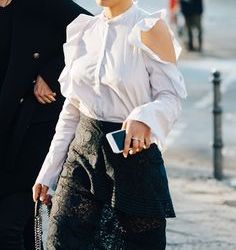
Berlin Street Style during fashion week ‘17
http://www.vogue.com/slideshow/berlin-fashion-week-street-style-fall-2017
0 notes
Link
A short editorial film about street style in Berlin.
http://www.refinery29.de/belin-shoot
0 notes
Text
Brigitte Crisp - What is Berlin Fashion like?
As both a painter and having a large interest in fashion, I am very curious about the fashion scene in Berlin. When I visited Berlin for a brief weekend last spring, I was so inspired by the street style that I saw all over the city and immediately desired to learn more about the fashion in Berlin. I follow various people on social media who live and work in the fashion industry or magazine companies in Berlin so I have a slight idea of the style that is currently taking place in this city, but I am still extremely curious to learn more about specific brands and the overall popular aesthetic, especially within womenswear. Lately I have been reading about Berlin fashion week and trying to get a better idea and some more insight of the designers that create their lines in Berlin or present their collection there. It seems to me that a lot of the fashion is based around deconstruction and the youth edgy culture. I have noticed a lot of mixing of traditional with very non traditional pieces styled together to create a high fashion / punk/ street wear type of aesthetic. Within the fall 2017 runway show presentations, I personally really enjoyed Julia Seemann’s collection.
0 notes
Text
Brigitte Crisp - Artist Contribution
I recently came across the Berlin based mixed media artist Raphael Danke. He creates collages based off fashion photography and surrealism. I am very interested in both collage and fashion so I am happy to have found an interesting German artist who is working in Berlin.
You can read more about him here:
http://www.sleek-mag.com/2017/02/09/introducing-raphael-danke/
http://www.sleek-art.net/artists/raphael-danke.html
Pictured below: Untitled (5), 2013
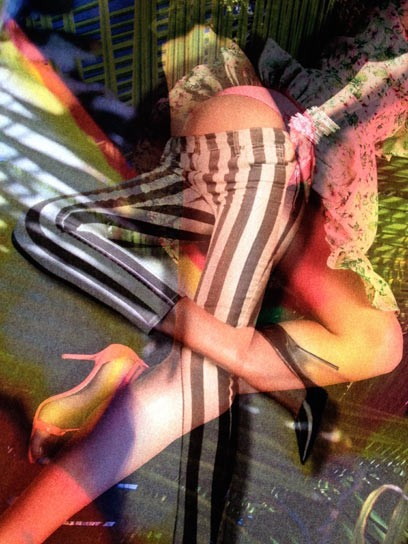
0 notes
Text
Brigitte Crisp - Response to Post 01:
Hey! This film, Run Lola Run, seems very interesting. Recently I have noticed a more prevalent cyber-techno aesthetic than ever before. I have been on Tumblr for almost ten years now and I have seen various cyber trends surface around on the Internet but lately I definitely feel like this type of vibe has become more and more popular. I think this is really interesting considering this film was made in 1999. For someone like me, who has only visited Berlin once, and obviously have not taken part in this underground culture in Germany, I have never fully thought about where these cyber trends originated from. But now that the internet is as popular and accessible as ever, I feel closer to gaining insight or more of an understanding to these trends that begin elsewhere and influence many people all over the world. With a film like this, I assume that others who were not a part of this culture, wouldn’t fully understand the aesthetics taking place like myself. After watching the trailer, I began thinking about the effects and overall vibe that was used in the production of this film. Like you pointed out, the combination of the fast changing clips and intertwining of animation is pretty fascinating. From what I have noticed recently, this style of quick changing clips and incorporating various styles of filmmaking is also very prevalent today within short, more commercial filmmaking techniques. The fact that this influence of the overall aesthetic is still taking place in today’s age is a crazy thought to me. I guess it is all part of the notion that trends eventually come back into popularity.
0 notes
Text
How does the fall of Berlin’s wall affect the attitudes and livelihoods of its artists? How have the artists shaped Berlin?
As mentioned before, I’m interested in the interaction between the social and political tensions of Berlin and its relationship to its cultural output. I’m interested in exploring Berlin as a pseudo-anarchical “temporary autonomous zone” before, during, or after the fall of the wall in 1989, and how that affected the birth of a new haven for artists. What did artists talk about right after the wall fell? How many new artists came to Berlin as a destination? How have artists played a role in the reform (if there has been reform) or the rebirth of the city? Can the outcomes still be felt today?
0 notes
Text
Hito Steyerl
But what if the truth is neither in the represented nor in the representation? What if the truth is in its material configuration? What if the medium is really a message? Or actually—in its corporate media version—a barrage of commodified intensities?
A thing like you and me, April 2010.
Hito Steyerl is an essayist and artist who currently works and teaches in Berlin, and whose work and writings involve the circulation of the image, globalization and visual currency, and post-representation and objectification in a increasingly technological/ “smart” world.
vimeo
Hito Steyerl, How Not to be Seen: A Fucking Didactic Educational .MOV File, 2013
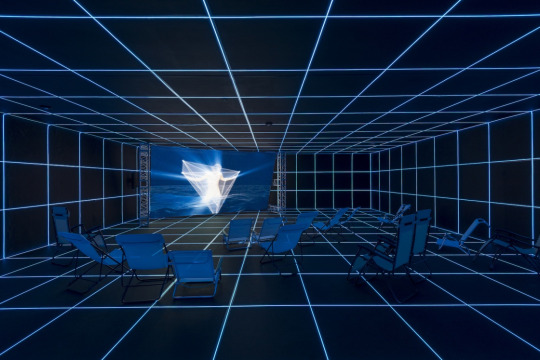
Installation view of Hito Steyerl: Factory of the Sun, February 21–September 12, 2016 at MOCA Grand Avenue, courtesy of The Museum of Contemporary Art, Los Angeles, photo by Justin Lubliner
Other Essays:
In Defense of the Poor Image If You Don’t Have Bread, Eat Art!: Contemporary Art and Derivative Fascisms
0 notes
Text
Techno and Berlin after the wall
Hey all, Carrie here to write about some subcultures and social dynamics that arose due to the fall of the Berlin wall, some of which were brought up in the last post with Run Lola, Run.
One of the things that people associate with Berlin most often is techno - specifically, a vein of super minimal, stripped down, repetitive techno, with clubs like Berghain and Tresor in mind. Techno originated in Detroit, which took the repetitive drum cues from Chicago House and created a black, futurist vision with groups like Underground Resistance and people like Juan Atkins. The 80s was an amazing time for the birth of new music, with American waves (such as Afrofuturism) and European movements (with groups like Kraftwerk) feeding off each other - somehow in Berlin, DJs started playing records that you could otherwise only hear in Detroit, and began to produce their own, minimal, super industrial sounding techno.
With the decline of the cold war, and post-wall in Berlin, abandoned warehouses, derelict buildings, and otherwise intermediate spaces were fertile for the youth of Berlin to not only squat and use as creative spaces, but also to use for massive raves - effective temporary autonomous zones. With almost no sense of time, ravers would rave for days at a time (another Run Lola Run connection), doing drugs like ketamine to find outer-body experiences.
(as an aside: it’s also interesting to note how industrial or super-tense social conditions lead to the birthing of new music and club cultures, eg. with the Hacienda rave scene in Manchester and the origins of house music in Chicago, and Baltimore/Jersey club. also related are the different drugs or lack thereof that suit the purpose of these music/parties)
Techno since then has moved more in the mainstream, and “proper” techno has become sort of an elitist umbrella term for super dogmatic/purist techno listeners. People travel to Berlin just to see if they can get into the notoriously selective (and hedonistic) Berghain.
Minimal techno isn’t even close to being my favorite music genre, but has been formative in my life just to introduce myself to various underground cultures.
Recommended reading for this topic:
Der Klang Der Familie (which is supposed to be an amazing first-hand account look at Berlin techno after the wall)
Energy Flash (general summary of development of dance music)
and there are countless other books/movies/articles examining this genre and how it developed.
Here’s a mix that represents the “Berlin” sound:
youtube
0 notes
Text
Berlin Post 01: Run Lola Run
Hello World! I’m writing the first post here on the blog for the 2017 USC Roski Berlin Trip. Having never been to Berlin before, I am really looking forward to all the new experiences and people we are going to encounter as well as learning more about contemporary German art.
I have always been interested in German culture, feeling there is a certain intensity to it—both in terms of geographical location and the political consciousness of the people post WWII.As far as raising a question for this post, I’d like to do some research on one of my favorite films, Run Lola Run (that is also listed on our syllabus), which after seeing raised my interest in German youth culture through the techno-cyber-punk aesthetics of the film.
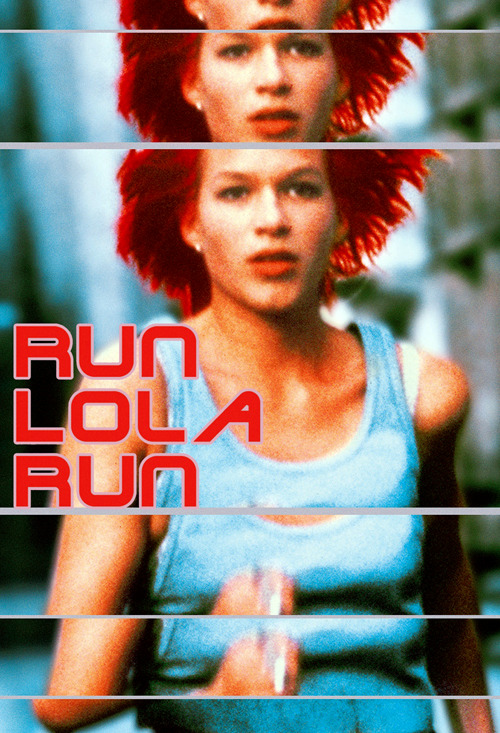
Directed by Tom Tykwer, The movie was made in 1999 and follows a very untraditional plot line, constructed around three alternative universes in a kind of classic Atari arcade game where the protagonist, Lola, has three lives (DanceCult). She is on the run to rescue her boyfriend Manni, who is in danger of failing to pay off lost money within a 20-minute timeframe. In order to complete the task successfully, Lola must trek all over Berlin in attempts to get the large sum of money in time.
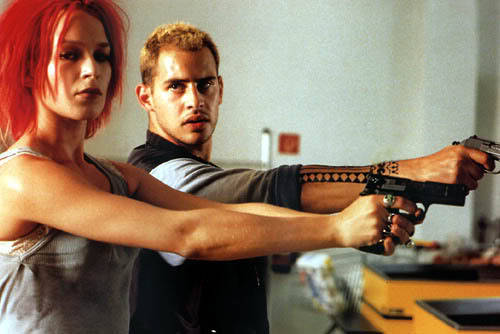
The cinematography of the film is very unique and immersive. Cut up and stitched in a fast-paced tempo, the shots incorporate a mixture of live-action, animation, and video game style edits. It is a relatively short film, but each scene is so captivating, always keeping you on the edge of your seat.
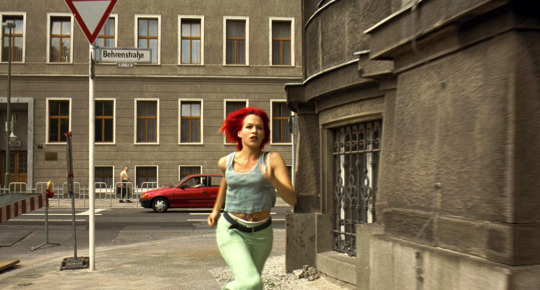
Seeing Lola interact with the city on such a visceral level really opened up to me a imaginative perspective of this kind of electricity Berlinian (not a word lol ) youth culture takes part of, while still taking into consideration the greater fantasy/fiction style of the film.
The electro-techno soundtrack of the film, also created by the director, plays a major role in making this combination of urban life, cyberspace, and club culture really come alive in such an exciting manner.
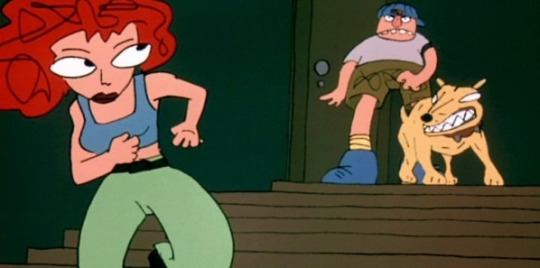
As stated in this review of the film from Dancecult: Journal of Electronic Dance Music Culture,
“ The supermachine drive of Lola, her inhuman ability to run, reflects the endurance of techno clubbers during their 48-hour pill-popping party weekends. Yet Lola does not take drugs. Her strength seems to derive purely from her heart and will. We imagine, however, that the vitality represented by her fiery red hair has its basis in the amphetamines of generation chemical.”
You can read more at:
https://dj.dancecult.net/index.php/dancecult/article/view/296/282
I really loved this movie and would like to learn about similar German films of this genre, as well as gain greater understanding of these types of subcultures specific to Berlin.
Here is a cool video clip/ trailer of the film:
https://www.youtube.com/watch?v=ppeZQ8inevE
0 notes